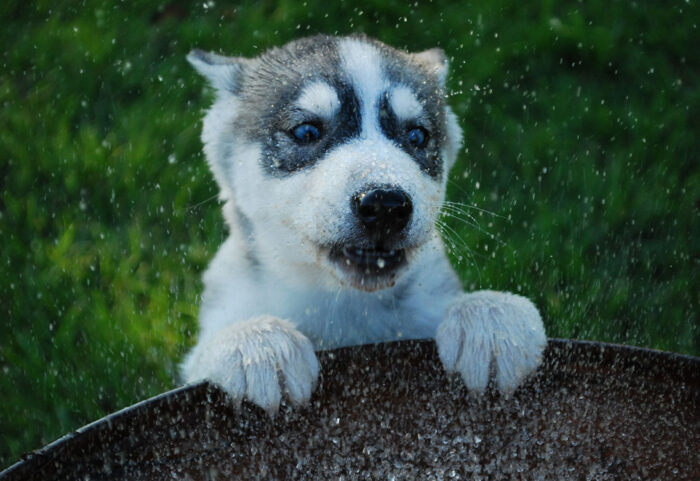Can Cats Get Heat Stroke?
Dogs locked in hot cars get a lot of press, but should you be worried about your cat in the heat of summer? In a word: yes. Cats can’t tolerate extreme heat any more than people can. Extreme heat can quickly become dangerous – heat stroke in cats can result in organ failure and even death.
What is Feline Heat Stroke?
Heat stroke, technically known as hyperthermia, is always preceded by descriptively-named heat exhaustion. Both occur when a cat’s internal temperature rises and he unable to bring it back down on his own. Prolonged periods in excessive heat, both with and without humidity, can cause heat stroke to occur.
What Does Heat Stroke Look Like in Cats?
The signs of heat stroke come on gradually. Cats who are unable to regulate their internal temperature will often become restless as they seek out cooler areas. An overheated cat might begin panting, sweating from his paws, or even excessively grooming to try to cool himself down. Once the medical effects of heat stroke become more serious, a cat might start vomiting, drooling, or acting disoriented. His gums will become visibly red. The surest way to tell whether a cat’s internal temperature is dangerously high is to check his rectal temperature: normal temperature is 103ºF while a cat suffering from heat stroke will have a temperature of 105ºF or higher, although anything over 103ºF is cause for concern.
Treating Heat Stroke in Cats
Heat stroke is serious and should be treated immediately. If your cat is conscious but suffering from signs of heat exhaustion, immediately bring him to a cooler location. Soak him in cool – not cold! – water and give him plenty of water to drink. It’s important not to force your cat to drink water…he will drink it when he’s able. No matter how minor you think the incident was, always take your cat to a veterinarian to ensure there was no internal organ damage. If you find your cat unconscious, submerge most of his body in cool water but take care not to allow any water to enter his nose or mouth. Once your cat feels cooler to the touch, rush him to the emergency veterinarian as quickly as possible. There are a few things you don’t want to do if you suspect your cat is overheated. Don’t use ice or ice water as this can be damage your cats cells and potentially restrict blood flow. Don’t completely submerge your cat in water (including his head) and don’t cool him down too quickly.
How to Prevent Feline Heat Stroke
Understand that some cats are more predisposed to heat stroke than others. Flat-faced (brachycephalic) cats have a respiratory structure that means they overheat faster than other cats. Very old or young cats also have difficulty regulating their own temperature. Cats with preexisting medical conditions such as asthma or kidney disease as well as cats who are overweight are also more at risk. Darker-furred cats absorb more heat, so they’re also predisposed. Cats are usually pretty good about getting themselves to a cooler spot if they’re feeling hot. That said, here are a few of the most common situations in which cats suffer from heat stroke:
- Becoming trapped in an outdoor structure, like a shed or a children’s playhouse
- Being stuck inside a car with no A/C when it’s more than 70ºF outside
- No readily available access to water or shade
- Getting stuck inside a clothes dryer – this happens a lot!
When in doubt, bring your cat to a cooler location and check with your vet to make sure he’s healthy.


